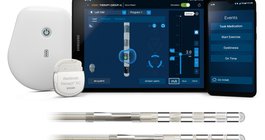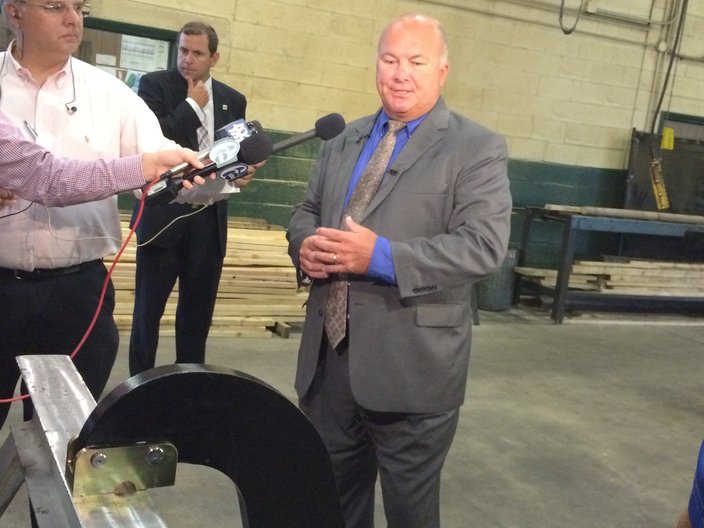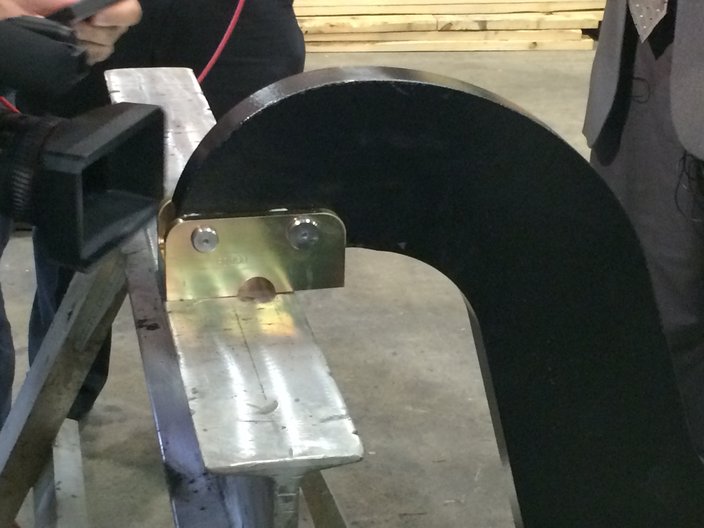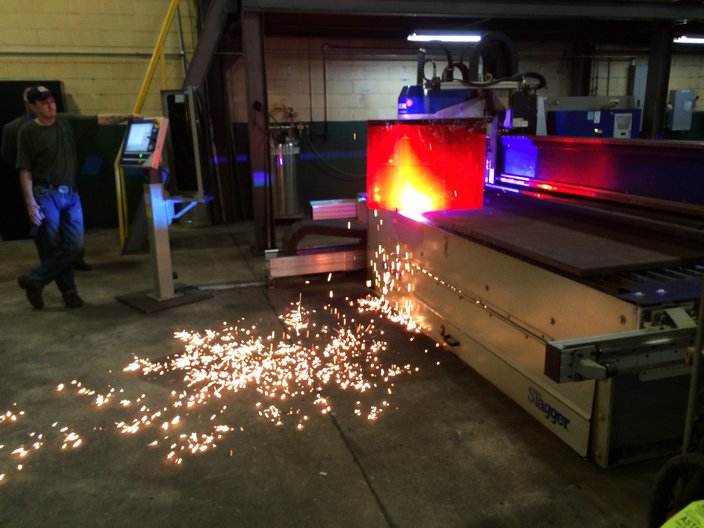
September 01, 2016
Four Silverliner V trains returned to service Thursday along SEPTA's Regional Rail system.
And, that's just the start.
On Thursday, SEPTA officials joined representatives from Hyundai Rotem at PennFab Inc., a Bensalem-based company contracted to fabricate new equalizer beams for 120 Silverliner V railcars taken out of service earlier this year. Cracks were discovered on the welds that held the equalizer bars in place.
The replacement beams — part of a train's suspension system — have been redesigned, and will be installed with a pin-foot — not welded — connection, in the hopes of preventing a repeat of the problem.
"This was a very unfortunate episode in SEPTA's life," said Pasquale T. "Pat" Deon Sr., SEPTA's board chairman."We regret the inconvenience, but safety is of the utmost importance to SEPTA."
During the early morning press conference, SEPTA General Manager Jeff Knueppel said that four of the repaired Silverliner V trains returned to service Thursday morning. While the rest of the Silverliner V trains fleet should be back in service by mid-November, SEPTA plans to resume a normal, weekday schedule on the Regional Rail lines by early October.
"This has been a time of terrible inconvenience for our riders," Knueppel noted.
SEPTA's Ron Hopkins, discusses how the new pin-foot system is intended to solve the problem the transportation company has had with welds on equalizer beams on Silverliner V trains.
In order to counter the shortage of railcars, SEPTA has been leasing locomotives and passenger train cars from the Maryland Area Regional Commuter agency, Amtrak and NJ Transit. According to Andrew Busch, SEPTA spokesman, leases on six locomotives and 48 passenger trains will cost about $1 million in September.
The cost to the agency in July, including loss of ridership, train leases, ticket refunds, labor and overtime for employees, was about $2.5 million, Busch said. Costs for August have not been calculated yet.
The equalizer bar problem has cost Hyundai Rotem about $2.7 million since the cracks were first discovered, said Andy Hyer, a company spokesman.
In unveiling the new beams, Knueppel said SEPTA continues to conduct stress testing on the beams, but they believe the beams will last at least 30 years. The new design will help reduce future problems in two ways, he said, specifically the removal of both the welds and a notch on the beams that will help distribute weight more evenly.
"A notch brings more stress to a welded location," explained Knueppel.
An example of the pin-foot system that SEPTA is using on the newly installed equalizer beams.
The new equalizer beams will utilize a two-pin fitting on the "foot," or a metal brace on the end of each equalizer beam. The beam edges are smooth, rather than notched, as well.
Michael Mabin Sr., PennFab's president, detailed how the replacement equalizer beams are produced. To create the 380-pound beams, they feed a 4,000-pound sheet of steel into a plasma cutter.
The enormous machine hummed to life on Thursday morning, slowly ramping up for the job.
"We need to get the pressure up!" shouted Mabin as the hum of the machine grew to a roar.
An equalizer beam is cut from a steel sheet at PennFab, Inc. in Bensalem.
After a few clicks on a control panel near the machine, a bright plasma beam cut through the steel to produce a raw equalizer beam.
The entire process took about six-and-a-half minutes to complete. Once the beam was cut, Ron Hopkins, assistant general manager of operations for SEPTA, said the beams would be inspected for cracks and imperfections, then sandblasted and painted before being installed.
Riders shouldn't notice anything different about riding a Silverliner V train with the new beams, said Hopkins, adding the ride will be smooth and comfortable.
"[Riders] won't even know the difference," Hopkins said.
 Hayden Mitman /for PhillyVoice
Hayden Mitman /for PhillyVoice Hayden Mitman /PhillyVoice
Hayden Mitman /PhillyVoice Hayden Mitman /PhillyVoice
Hayden Mitman /PhillyVoice